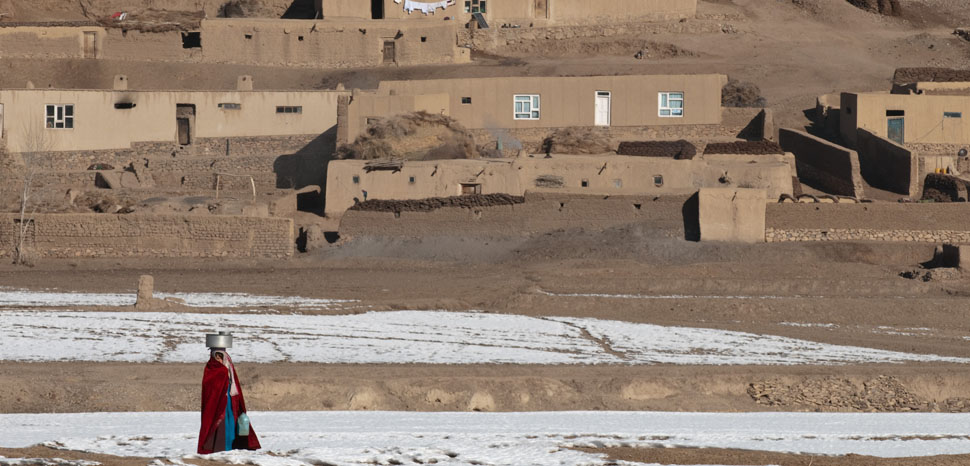Subscripe to be the first to know about our updates!

Afghanistan’s Three Trillion Dollar Question
Pierrepont Johnson
For three days in May, the streets of Kabul were peaceful. No bullets exchanged between the Taliban and government forces. No bombs dropped. The ceasefire, which coincided with the Muslim holiday of Eid al-Fitr, was significant not only for its lack of casualties, but also in that it laid the groundwork for a prisoner exchange between the two warring sides. This was the first major diplomatic showing between the parties since the Taliban rose to power in the mid-90s. While diplomacy is critical to peace, long-term economic development must be prioritized if the country is to install democratic institutions and reduce terrorism. Afghanistan has a unique opportunity, though one that comes with its own risks – the country’s $3 trillion worth of mining deposits.
To date, efforts to harvest Afghanistan’s mineral wealth, which exceeds the GDP of Great Britain, Italy, or India, have largely failed. The threat of the Taliban and extortion from militias, infrastructure deficits, and high mining fees have made investments in Afghanistan’s 1,400 mining fields an unprofitable venture. Prior to the Soviet invasion in 1977, Afghanistan was a relatively prosperous country, with a rich history and culture. The country has since suffered largely due to de facto foreign rule, from the end of the Cold War to the US-led War in Afghanistan. Today, it is one of the poorest countries in the world.
However, a developed, safe, and corruption-free mining sector can become a driver of economic growth, as well as perhaps the best weapon the country has in its fight against terrorism. The UN identifies poverty among the leading causes of terrorism, as 40% of lone wolf terror incidents are orchestrated by those who are unemployed. For mining to reach its potential in aiding economic growth and reducing terrorism, diplomatic resolutions between the Taliban and Afghan government, specifically in regard to the mining sector, must be reached. In addition to diplomacy, the U.S. must shift its policy to focus on foreign investment, instead of military aid, for the mining sector to have a chance.
The primary reason Afghanistan has not been able to profit from its natural resources is political instability. In addition to 25 years of off-and-on Taliban rule, Afghanistan has shouldered additional burdens from Al-Qaeda and ISIS. However, developments in recent months have signaled hope. In February 2020, President Trump signed a historic preliminary peace agreement with the Taliban. Scheduled to happen in July in Qatar, these talks could provide the first step to a more stable Afghanistan.
If the two sides come to the table in July, the groundwork for an action plan regarding the future of the mining sector in Afghanistan must be proposed. Currently, the Taliban, Afghan government, and local militias profit from the mines. Minerals are believed to be the Taliban’s second-largest source of revenue. The Afghan government barely sees revenue from its mineral sector, as the economy is largely driven by agriculture. Even if concessions need to be made on the government’s side during negotiations, any guaranteed revenue that can be extracted from the mines would have a huge benefit. For a country with 55% of its population below the poverty line, and an unemployment rate of 24%, this could have a big impact.
The U.S. should also have a vested interest in the economic development in Afghanistan. The primary goal of US foreign policy in the country is to reduce terrorism, and economic development is a crucial step toward this objective. Ideally, a concession regarding the mines would have been included in the US-Taliban pact. If the US can bring to the table a discussion on implementing rule of law for mineral extraction going forward, it could be a crucial step in getting the resources to benefit the Afghan government. Second, the U.S. should invest in Afghanistan’s mineral resources. Foreign aid has shown to have little success in the country, but a long-term strategy focusing on economic growth and development helps the U.S. achieve its primary objective in achieving peace, while also providing economic benefits from the use of mineral wealth.
Harvesting Afghanistan’s vast natural resources will take time. In addition to diplomatic and economic challenges, safety and human rights in the mines must be a priority. Afghanistan ranks 173 in the world in corruption, while being recently accused of misappropriating coronavirus aid funds. However, government revenue can help reduce corruption, as the IMF discusses two types of corruption: corruption due to greed and corruption due to need, with the latter being applicable. $3 trillion of limestone, gemstones, copper, iron, gold, and salt can’t be ignored. Increased government revenue should be used not only for government salaries, but also to further develop infrastructure such as roads, hospitals, and schools, as well as create jobs. More economic opportunity would also reduce the temptation for young Afghans to consider joining terrorist organizations. Additionally, terrorist organizations, such as ISIS, that do not originate in Afghanistan would be less likely to establish strongholds as higher levels of development and stability act as a deterrent.
The mining sector won’t save Afghanistan. However, it can act as an important tool to accelerate development that has been halted due to conflict. The race to the mines seems inevitable – China has already invested billions of dollars in mineral extraction. India and the US have shown interest in mining projects as well. Progress in diplomacy can help increase foreign investment, which will create infrastructure that reduces poverty and ultimately fights terrorism. $3 trillion in natural resources will be an asset to a more peaceful and prosperous Afghanistan.
Source; Geopolitical Monitor